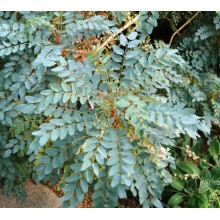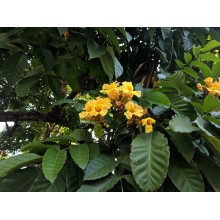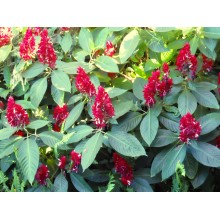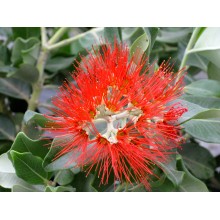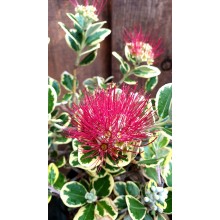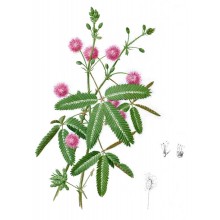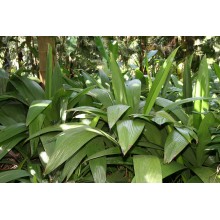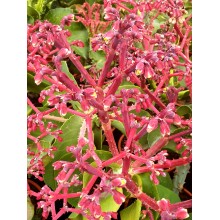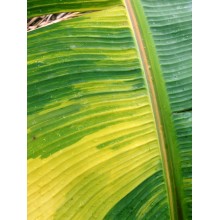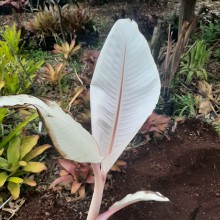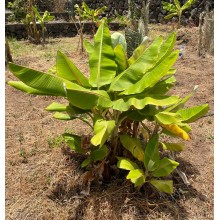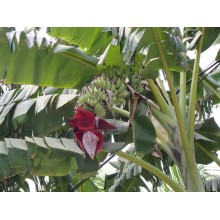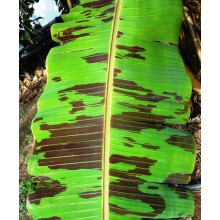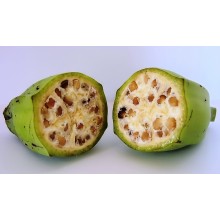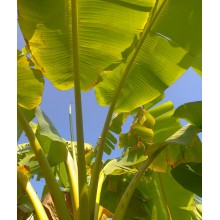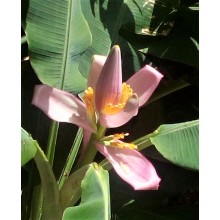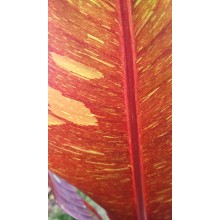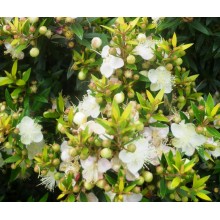Altre esotiche Ci sono 631 prodotti.

Qui troverete alcune specie di fiori e piante esotiche che non sono stati ancora messi nella loro categoria. Alcune sono piccole piante erbacee, mentre alcuni sono grandi alberi. Troverete acalyphas, cordylines, Hoyas, pandanus, plumerias ed altri, tra cui piante rare. Giorno dopo giorno aggiungeremo articoli sempre più interessanti.
-
Marcetella moquiniana
Marcetella moquiniana
Elegant shrub with architectural shape. Regularly arranged pinnate leaves, show colouful petioles. Flushes of new leaves are bright red. This Canarian native grows wild at mid-low elevation, in mediterranean-like conditions. It is easy to grow and can be watered througout the year, as it is evergreen.
24,00 € -
Markhamia lutea
Markhamia lutea
Spectacular flowering shrub to small tree, native to Africa. It produces long-lasting inflorescences of the brightest yellow.
48,50 € -
Megaskepasma erythrochlamys
Megaskepasma erythrochlamys
This is one of the showiest shrubs in Tenerife, continuously flowering from summer to fall. Megaskepasma is the perfect garden shrub, with elegant opposite leaves and showy terminal blooms with crimson bracts and two-lipped white flowers.
27,50 € -
Metrosideros collina cv. Spring Fire
Metrosideros collina cv. Spring Fire
Spectacular crimson-stamened pincushion or pom-pom type flowers adorn the plant through spring and summer.
38,00 € -
Metrosideros excelsa 'Variegata'
Metrosideros excelsa 'Variegata'
What a beauty! This plant came out of the brazilian forests, and it soon became one of the most sought after indoor plants. According to begonia experts, this a "Spotted-leaf angel-wing cane-type begonia" and indeed the wings are dotted with silver circles.
38,20 € -
Mimosa pudica - Sensitive Plant
Mimosa pudica - Sensitive Plant
This species rocks! It is a creeping plant, with sensitive leaves that respond to touch, heat or wind. When you touch the leaves they quickly close for a few minutes. It is from tropical America and it loves a lot of sun and heat.
17,20 € -
Molineria capitulata - Palm Grass (Curculigo capitulata)
Molineria capitulata - Palm Grass (Curculigo capitulata)
Ornamental palm-like herbaceous plant from SE Asia to Australia. Palm-grass grows in bright shade and creeps as a tall ground cover, with very showy ribbed leaves, resembling the juvenile foliage of so many palms, like Syagrus romanzoffiana.
25,44 € 31,80 €Prezzi ridotti! -
Monstera adansonii 'Double Window'
Monstera adansonii 'Double Window'
Selected clone with larger leaves and more fenestrations than usual, originally spread at auctions at Fairchild Tropical Garden in Miami. It is larger than a typical adansonii and more "skeletal", with more holes when it matures, and so it looks similar to a Monstera obliqua.
36,00 € -
Musa 'Cavendish' - Variegated Supreme
Musa 'Cavendish' - Variegated Supreme
This is a variegated Cavendish banana trees, selected in Tenerife from the local banana named Cavendish Gruesa Palmera. They produce edible fruits and make great eccentric ornament. Fruits can have some stripes too! The Supreme will give a shocking plant full of stripes and bands on the very first cycle.
197,40 € -
Musa 'Nam Wah Albino'
Musa 'Nam Wah Albino'
This Albino clone of Musa Nam Wah is obtained once in a long while when a plant of variegated Nam Wah gives a pup lacking clorophyll. This shoot will grow new leaves of an incredibly white colour, sometimes with a soft pink hue.
165,00 € -
Musa 'Nam Wah Khom'
Musa 'Nam Wah Khom'
The quality of the fruit of 'Nam Wa Khom' is equivalent to others "Nam Wa" bananas, but the height of mature plants is only 1.5 m.
62,50 € -
Musa acuminata
Musa acuminata
Musa acuminata is one of the wild ancestors of actual edible bananas. Fruits are sweet but small, with large seeds inside. Leaves are upright, with a pink tone and very ornamental.
38,00 € -
Musa acuminata var. sumatrana - Blood Banana
Musa acuminata var. sumatrana - Blood Banana
Blood banana is a supreme ornamental for warmer climates or conservatories. The dark green leaves are splashed with purple-burgundy blotches. A classic of all-times for tropical gardening.
40,60 € -
Musa balbisiana
Musa balbisiana
This is a wild banana with seed, the hardiest ancestor of most edible bananas. It is hardier to cold, wind and drought than most bananas. Fruits are edible but they are starchy and full of seeds. Fibres are strong and useful.
38,00 € -
Musa bauensis
Musa bauensis
Wild banana tree native to the limestone hills close to Bau, in Sarawak with slender pseudostems and ornamental lush foliage. Mature clumps are particularly attractive, because they keep many slender "trees" that will happily live together without too much overcrowding.
47,00 € -
Musa ornata
Musa ornata
Ornamental banana of moderate size, with very showy pink-orange inflorescences. The whole plant is usually only 2-3 m tall, the foliage is very ornamental and the bright bracts are often held at eye level.
32,30 € -
Musa x 'Siam Ruby'
Musa x 'Siam Ruby'
Is this the best ornamental colourful foliage on earth? This is a rather dwarf banana tree with fully speckled leaves with all the hues of orange and red, intermingled with lime-green speckles.
95,00 € -
Musa x Iholena Maritu
Musa x Iholena Maritu
This remarkable musa from the Iholena subgroup, was discovered in Colombia, despite typically being native to New Guinea and Pacific islands.
78,20 € -
Myrtus communis ssp. tarentina
Myrtus communis ssp. tarentina
Myrtus communis is the most classic Mediterranean Myrtle. Tarentina is the short leaved, compact form. It is a tough Mediterranean plant producing remarkable scents, both in leaves and flowers. It is easy to grow, also in pots.
11,80 €
Al momento ci sono pochi prodotti in questa categoria Altre esotiche
















